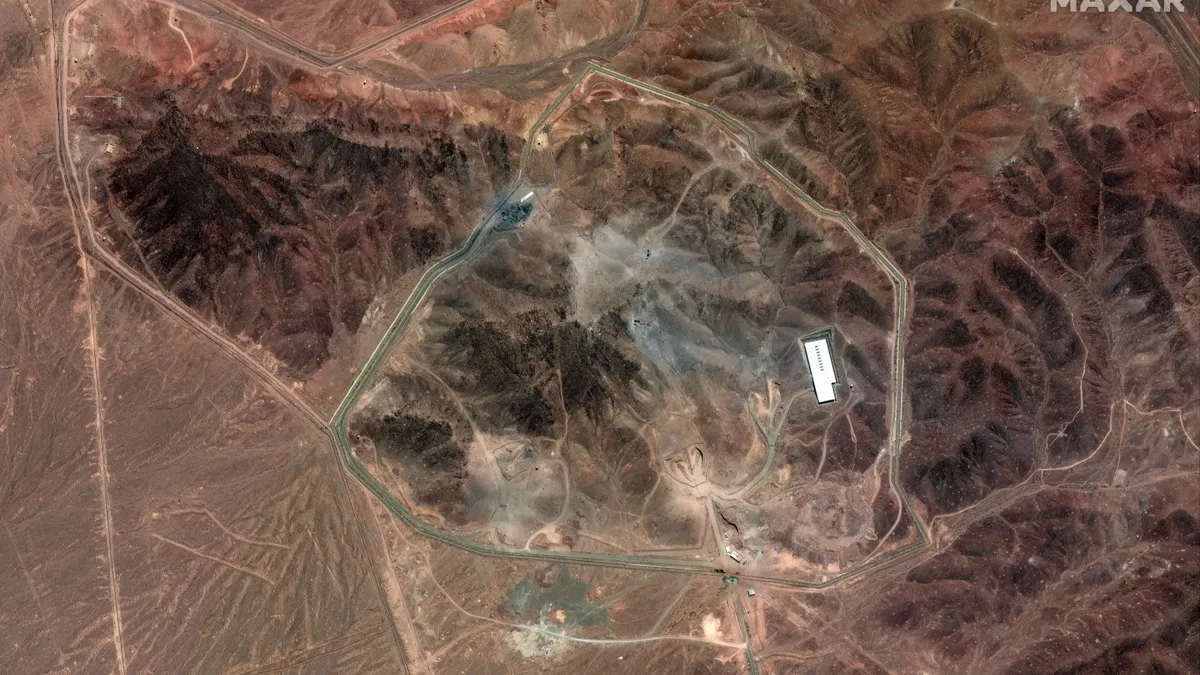
In the wake of nearly two weeks of targeted strikes by American and Israeli forces, significant questions arise regarding the extent of damage inflicted on key components of Iran's nuclear program. A leaked document from the Defense Intelligence Agency suggests that while some sites may have sustained minimal damage, the head of the CIA claims that Iran's overall nuclear capabilities have been severely compromised. President Trump, during a press conference in The Hague, emphatically stated that the program has been "obliterated," positioning this military action as a demonstration of American strength that paves the way for potential peace in the region.
Following the strikes, it is essential to assess the current status of Iran's four primary nuclear sites: Fordo, Natanz, Isfahan, and Arak. Each location plays a crucial role in Iran's nuclear ambitions, and understanding the implications of the recent military actions is vital for analyzing the future of Iran's nuclear program.
Deep within a mountain, the Fordo fuel enrichment site stands as the most fortified of Iran's nuclear facilities. Located approximately 300 feet beneath granite, Fordo housed thousands of centrifuges enriching uranium to near weapons-grade levels. General Dan Caine, chairman of the Joint Chiefs of Staff, noted that American military planners had spent over a decade preparing for a potential strike on this site. The Pentagon developed the Massive Ordnance Penetrator, a 30,000-pound bunker-buster bomb, to penetrate Fordo's defenses effectively.
During the attack, B-2 Spirit bombers dropped these massive munitions into Fordo's ventilation shafts in a meticulously coordinated sequence designed to breach the facility. While Caine described the strike as a perfectly executed operation, experts caution that penetrating such a deeply buried site is inherently challenging. Issues like hard rock and geological irregularities can hinder the effectiveness of bunker-busting weapons, as noted by Raymond Jeanloz, a professor at the University of California, Berkeley.
Despite differing assessments, outside sources indicate that Fordo suffered significant damage. The Israel Atomic Energy Commission reported that the facility was rendered inoperable post-strike, and Rafael Mariano Grossi, head of the International Atomic Energy Agency (IAEA), suggested that the centrifuges are no longer operational. Following the American strike, Israel targeted access routes to Fordo to hinder any potential recovery efforts.
Before the recent strikes, Natanz served as Iran's central enrichment facility, having previously been the victim of sabotage, including a devastating computer virus. To protect its operations, Iran relocated Natanz's centrifuges underground in recent years. Israel initiated its attacks on Natanz on the first day of the conflict, targeting the pilot fuel enrichment plant and associated support facilities.
The U.S. followed up with its strike, deploying two Massive Ordnance Penetrators against the underground centrifuge halls. Jeffrey Lewis, a professor specializing in nuclear nonproliferation, remarked that while the surface facilities were destroyed, the underground enrichment halls likely sustained severe damage as well. However, he pointed out that Iran has been developing a new underground facility near Natanz, which appears to remain intact.
Isfahan was pivotal for Iran in preparing and converting uranium into metal, a crucial process for nuclear weapon development. Israel's initial strikes successfully destroyed the metal conversion facility and several other buildings in the complex. The U.S. further escalated the assault with a barrage of submarine-launched cruise missiles, completely obliterating the above-ground facilities. Lewis confirmed that while the above structures were destroyed, nearby tunnels believed to contain stocks of highly enriched uranium survived the strikes.
The Arak reactor, although never operational, represented Iran's ambitions to develop plutonium, another key material for nuclear weapons. Israel confirmed it struck the Arak reactor on June 19, demolishing its concrete dome and a laboratory. While the reactor was not active, its destruction signifies a major setback for Iran's nuclear aspirations, as noted by Lewis, who stated that it is now "really not operational."
Despite the recent military actions, experts warn that Iran may still retain a significant nuclear capability. Prior to the strikes, the IAEA estimated that Iran possessed over 400 kilograms of highly enriched uranium, which, although previously safeguarded, could now be in undisclosed locations following reported protective measures by Iran. Corey Hinderstein, vice president for studies at the Carnegie Endowment for International Peace, noted that this uranium can be easily concealed in portable containers.
During his press conference, President Trump expressed confidence that Iran did not have time to evacuate any materials before the strikes. However, Albright cautioned that the resilient containers used for storing uranium may have survived the attacks, especially within the tunnels at Isfahan. Lewis echoed the sentiment, suggesting that Iran likely has additional undisclosed underground facilities that could serve as backups.
Ultimately, experts assert that the only viable solution to permanently halt Iran's nuclear ambitions is through a comprehensive agreement. Christopher Ford, a former Assistant Undersecretary of State for nonproliferation, emphasized the necessity of establishing cooperative verification and ongoing monitoring mechanisms to ensure long-term compliance and security. As such, the international community must focus on diplomatic avenues to mitigate the risks associated with Iran's nuclear program.